GWR coach livery 1942–1947
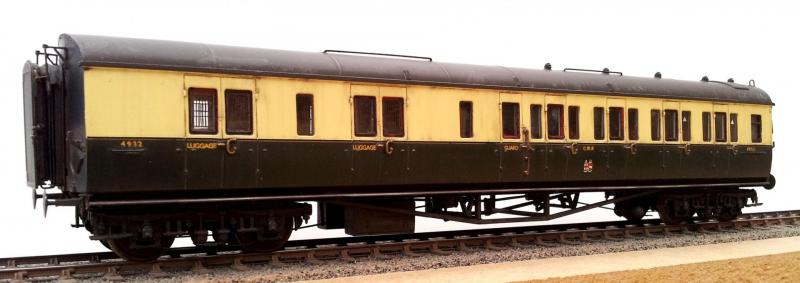
Gerry Beale's superbly-weathered Hornby D95 Brake 3rd, with some replacement etched luggage window grills from Brassmasters, 1940s Gill Sans lettering from CPL transfers, etched door handles from David Geen, Masokits etched brass gangways, and Hubert Carr sprung buffers with the correct 18" diameter heads. The model is depicted as running c 1943, before the more widespread adoption of double waist lining. Further details can be found here.
| One of Collett's large-windowed 60' Corridor First coaches, built in 1937 to diagram A20. The model was built by ROCAR the model builders, based on Comet parts. Image courtesy Comet Models |
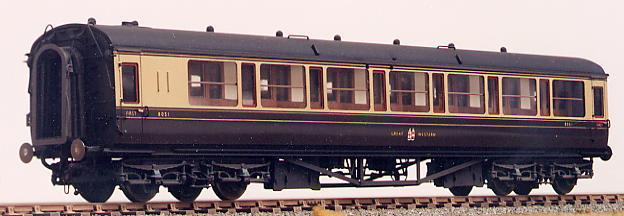 |
As with locos, the roundel ceased to be used from 1942.
In 1942, as a wartime economy measure, some ordinary passenger stock requiring repainting was seen in all-over grey, all-over dark brown, or all-over black, without lining and mostly without insignia. More prestigious stock appeared in reddish-brown (the ends remaining black), with a single ¾" orange line at the waist. 'G W R' (in pre-1934 lettering style) was applied below the orange line, with the coat of arms below the 'G W R'. (Other pictures of this vehicle in this livery are here and here.) With repainting of stock being a low priority at the time, the number of vehicles appearing in the reddish-brown lined livery was probably few. |
Nearly nothing is known about the actual colour of the WWII 'reddish-brown' except that it was probably a red oxide with varnish on top. This (rgb 113 44 27; hex #712c1b) is a suggested tone.
|
Dapol's rendition of the 1942 wartime 'reddish-brown' livery, applied to one of its 7mm E140 B-set coaches.
Picture courtesy of Adrian Stevenson. |
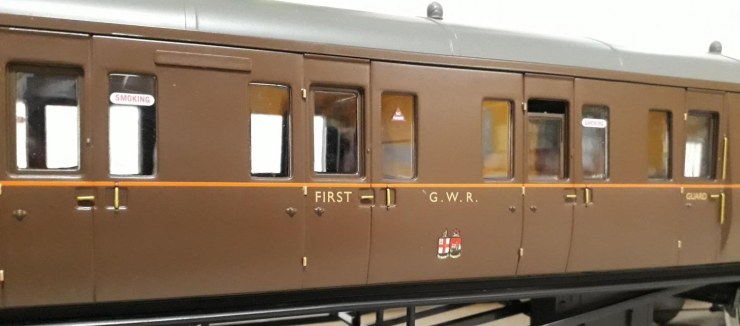 |
Dark grey had been adopted from the beginning of WWII for roofs, and was continued throughout the war, although black was adopted in 1947 for the new Hawksworth stock.
In 1943, the company insignia was applied below the waistline, being the coat of arms flanked by 'GREAT' and 'WESTERN', with the lettering, along with the class designations on doors and coach numbers, in a sans-serif font. At some time after 1943, normal brown and cream application was resumed, although roofs continued to be painted dark grey. Double waist lining was applied to principal and/or new coaches, while lesser coaches received just a single line. Droplight frames were painted maroon from 1943. The notation 'Third' was reintroduced for third-class compartments. In 1947, a 7" brown cantrail stripe was introduced.

Tony Richards' model of a 1939-refurbished Composite Restaurant car H33, converted from a Hornby 'Railroad' original, and using Comet etched brass overlays. Tony's description of the conversion can be found on the Swansea Railway Modellers Group site. (Tony is aware the lining should be double at the waist!)
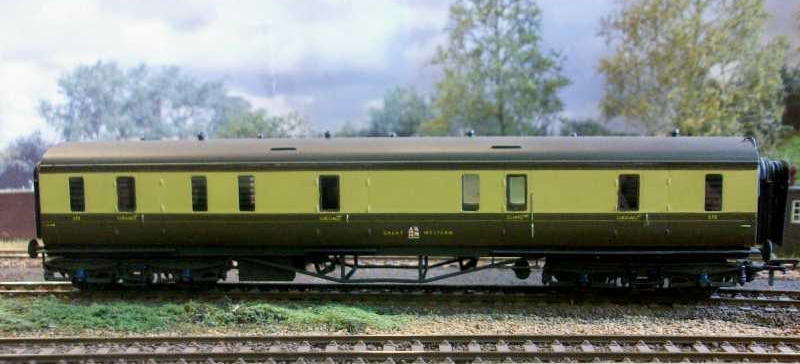
Robin Sweet's diagram K42 passenger full brake, built from a Comet kit, sitting on Robin's 'Brent' layout.
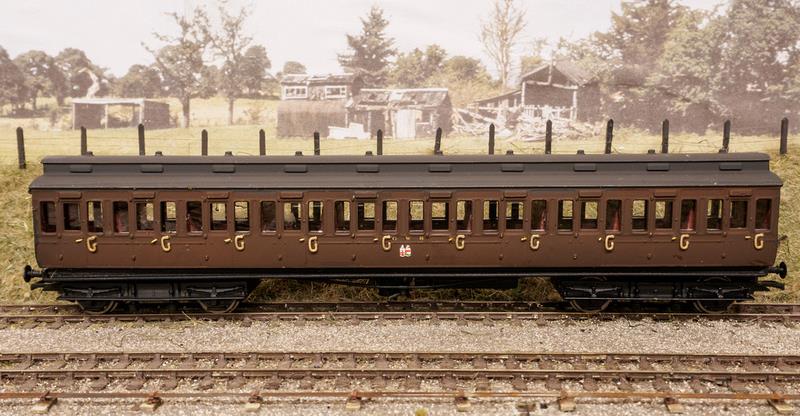
A C23 clerestory in wartime all over brown livery, by Jon Wallace. These 10-compartment 3rds ran on 10' Dean bogies.
|





